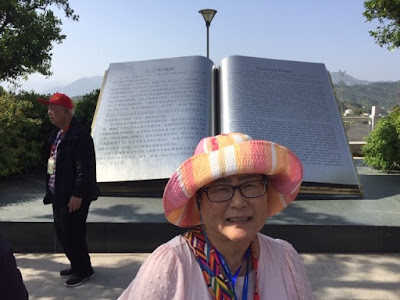Three Gorges Dam is definitely one of the highlights of Yangtze River Cruise.
Yangtze River starts from Tibet Mountains and runs through the southern part of China to South East Sea through Shanghai. Its length is 6,380 km. Yangtz River is the formal name, but due to its length, it is more often called Long River or Chang Jiang. On the northern part of China, there is another long river, called Huang Huh or Yellow River. It passes through important ancient cities, such as Xian, and reaches the Yellow Sea to the east.
China shapes like a rooster with Taiwan and Hainan as two feet. It has high mountains on the west and slopes down to the east. So all civilizations developed on the east coast and there are many large cities. Naturally they were affluent while the west were poor.
Yangtze River created many floods, at times producing thousands of casualties and displaced people. To avoid these catastrophes, China initiated a giant dam construction. It is Three Gorges Dam. The name of the dam was derived from the three gorges on the river with easier access than before the dam construction. China claims that it is the largest dam in the world, although the tallest may be Hoover Dam and the widest may be Aswan Dam in Egypt. They calculated the amount of cement that has been poured into the dam construction. It is said to have 32 turbines. Click here to see a video about Three Gorges Dam.
Because of this dam, the water level has gone up 114 meters, thus they had to relocate 1.4 million people to the nearby cities or at the higher points from where they lived.
The river, now deeper and wider, opened the waterway for transportation to and from Chongqing, the largest city in China. Our cruise ran upstream from Three Gorges Dam to Chongqing.
We arrived at the cruise ship close to the midnight. The Cruise was operated by Century Cruise, a Chinese company. We never met the captain, but the Director of Passengers was fluent in English and ran the show pretty much by himself. He was good.
The Places
We slept four nights on board, but we disembarked at several places of interest.
Boat Riding into the Gorge
We got on small boats and explored the inner parts of the gorges. The local guide was a minority tribal lady and she was so proud of herself being able to pronounce difficult English. The scenery was breathtaking.
White Emperor's City
The old three-kingdom story (Sam-Guk-Ji) is a favorite of any Korean or Chinese who likes ancient stories. This story was relived in this tour. White Emperor was Yubai, the founder of Chok Han along with his strategist or prime minister Jegal Gongmyung, and his two pledged brothers: Kwan Yu and Jang Pei.
There was a steep slope on stairs and some people were carried on human carrier.
On the way up, the river view was fantastic.
At the site, we also explored the cliff coffins or hanging coffins. In the ancient times, the Bo tribes living in the area believed that the coffins of dead people should be placed on the cliffs so that they can be protected from beasts and also they are placed closer to the heaven.
Before we reached this place, we passed through an area that is on the Chinese Yuan money bill.
He was not the only calligrapher. There were a lot of calligraphy writings of interest. The famous poets, such as Du Fo (Du Bo) and Yi Bai (Lee Tai Baek), all enjoyed the scenery of Three Gorges and wrote many poems.
Red Pagoda Tour
This tour required us to pass on a shaky bridge and climb up 99 stairs to the top of Red Pagoda. Surprisingly, Kwan Yu was one of the ancient gods who are respected by the believers of Chinese religions.
Bottle Painting
I still cannot believe that Chinese people can paint inside glass bottles. Some even were invited to practice. I could not do much.
Tea Ceremony
Chinese considers tea ceremony an important ritual to fellowship with friends, express respect to the elderly and express regrets to the offended. I did not know that Chinese drink a lot more green tea than any other teas. They claimed that the green tea is good for almost every physical issue. Well...
The 4-night cruise came to an end. Some parts were a bit boring, but overall, it was an once in a life time experience.

Farewell for now! - Jeffrey








































































No comments:
Post a Comment